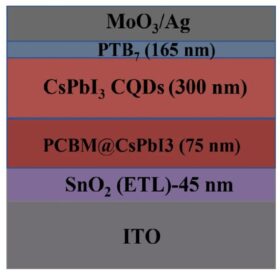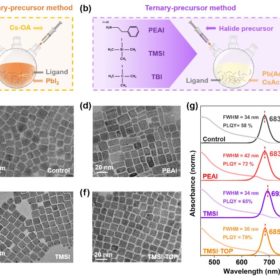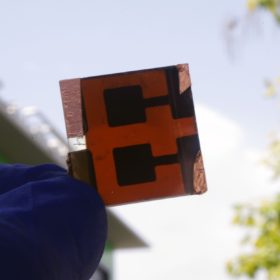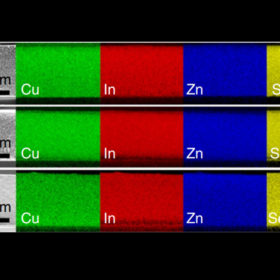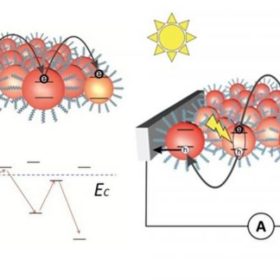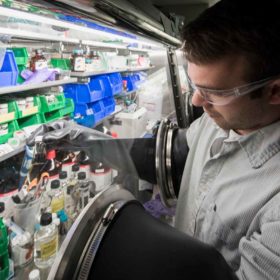Perovskite quantum dot solar cells on the path to achieve 30% efficiency
Researchers in Iran have identified new ways to design perovskite quantum dot solar cells via a series of simulations. They investigated, in particular, how the perovskite absorbers can be gauged in order to enhance their electro-optical properties.
Perovskite quantum dot solar cell with 16.25% efficiency
Chinese researchers have built a perovskite quantum dot solar cell that is reportedly able to reduce trap-assisted charge carrier recombination. The device has an open-circuit voltage of 1.23 V, a short-circuit current density of 17.73 mA cm−2, and a fill factor of 0.745.
US Air Force funds ‘quantum dot’ photovoltaic window project
UbiQD, a New Mexico-based nanotechnology developer, has created new transparent solar windows.
Ligand-free perovskite quantum dot solar cell with 9.3% efficiency
The quantum dots used for the device are based on methylammonium lead iodide and are synthesized within a porous silica (SiO2) matrix. Compared to its bulk counterparts, the ligand-free solar cell exhibited a more stable performance.
Flexible perovskite quantum dot solar cell with 15.1% efficiency
An international research team has developed a PV cell with all-inorganic cesium-lead iodide (CsPbI3) perovskite. The scientists added phenyl-C61-butyric acid methyl ester (PCBM), one of the best electron acceptors in organic PV cells, into the CsPbI3 quantum dot layer.
Lead-free quantum dot solar cells with 10% efficiency
Scientists in the United States have created a quantum dot solar cell which has a photon-to-electron conversion efficiency of 85%. The device is also said to exhibit remarkable defect tolerance and toxic-element-free composition.
Hybrid tandem quantum dot solar cell with 12.8% efficiency
South Korean scientists have produced an organic, hybrid-series tandem PV device that combines quantum dots and organic bulk heterojunction photoactive materials. They claim that the cell has the highest efficiency among all reported colloidal quantum dot cells, including single-junction devices and tandem devices.
Quantum dot hybrid HTJ cell with 12.82% efficiency
South Korean researchers have developed a hybrid tandem solar cell based on quantum dots and organic bulk heterojunction (BHJ) photoactive materials. They claim that the cell could reach an efficiency rate of around 15% if they continue to reduce energy losses in the quantum dot cell and enhance near-infrared absorption.
Russian scientists investigate quantum dot solids for PV applications
Researchers at the Moscow Engineering Physics Institute (MEPhI) have developed next-generation solids consisting of quantum dots (QD), or semiconductor crystals with a diameter of just few nanometers, that could deliver a big step towards cheaper and more efficient photovoltaic devices.
NREL develops controllable quantum dot systems
Researchers at the United States National Renewable Energy Laboratory (NREL) have developed a new designer quantum dot system, which allows for greater control over optoelectronic properties of the materials.
